Modern businesses run on data.
Users interact with data daily from entering their time for payroll, seeking guidance on existing processes, and analyzing data to make decisions. In our technology driven world, users can be empowered to gain insights from and interact with data all while automating those menial responsibilities that seem to be more burden than job task.
If you want to be able to switch quickly, innovate and respond to market demands, you don’t always want to be dependent on the IT department for business apps and reporting. Thanks to Microsoft Power Platform, users can now work with apps, workflows, reports and chatbots themselves.
The Microsoft Power Platform enables your business to craft solutions while empowering you to unite customized technology to help everyone, from the CEO to the front-line workers, drive the business with data.
What is Microsoft Power Platform?

Microsoft Power Platform is a group of products offered by Microsoft to develop and build complex business solutions, analyze, and draw data visualizations, automate a business process, or build virtual agents for communication.
All these products offer a platform in which no code is required to build the applications. These products are in the form of simple GUI which can be used by any business users or developers, thus helping to reduce the need for IT in the organization.
There are four products under the Microsoft Power Platform:
1. Power Apps
Power Apps is a nice and intuitive platform that provides users with a drag and drop feature to build a user interface for a mobile application. The users can add various controls to the user interface like textboxes, choice fields, etc. It can also allow users to use media devices like the camera, videos, etc. and other features necessary to build a modern mobile application.
There is a feature to connect to various data sources using Power Apps and after the development is completed, the users just need to publish the app to be consumed in the organization.
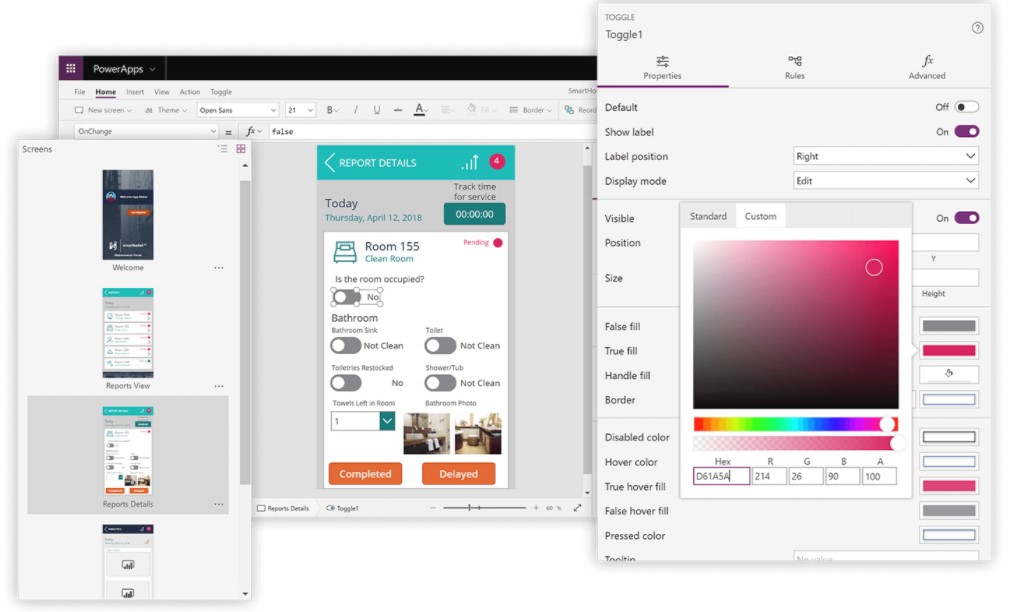
Power Apps is offered more like a platform-as-a-service from the Microsoft Power Platform. This service enables the users to quickly build apps that can be run on any modern web browsers like Chrome, Firefox, etc. and on the native mobile apps using Android, iOS, or Windows.
One important thing to note here is that using Power Apps, we can build mobile applications for internal users and not for customers around the world. As this platform is no code, developers won’t be able to control the UI elements or modify the underlying HTML codes to do any tweaking.
Power Apps come with a subscription if you are already using Office 365 Enterprise or anything higher than that. The Power Apps also come with a community plan which can be used as a free development environment and to upskill new talents.
2. Power Automate
Power Automate, formerly known as Microsoft Flow is a component of the Microsoft Power Platform that allows the business users to automate workflows within the organizations without writing any code for the same.
Modern businesses always gearing up for a faster and automated environment to tackle most of the previously handled manual tasks. These tasks can be as simple as automating leave policies within an organization or sending an email once a task is completed in Jira.
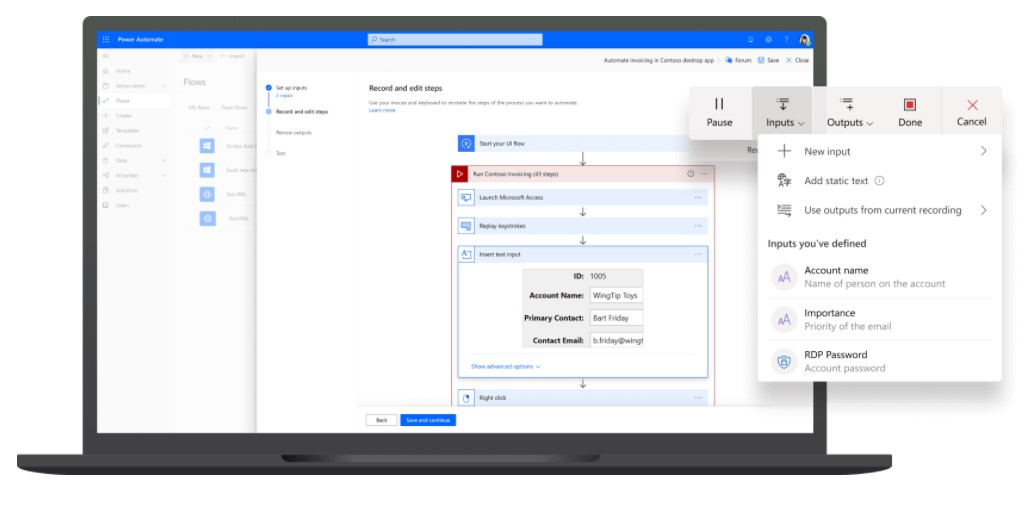
Power Automate already comes in with several pre-defined templates to choose a workflow and start working with. Users can pick up any of these workflows from the templates or can also start building their own workflow from scratch.
All these workflows can be further divided into three main types which are based on the trigger of any workflow as follows:
- Automated Workflow– These types of workflows are triggered based on some other action. For example, send a mail when a task is completed
- Scheduled Workflow– These workflows are scheduled to execute at specific times of the day, week, or month
- Button Workflow– These workflows are triggered by the click of the button
Ask yourself these questions:
- Do you currently have numerous software applications inside your business, and none of them integrate with each other?
- Would you like to synchronize files from one system to the other?
- Would you like to create automation, i.e. when a new lead comes in via your website the sales team are immediately alerted, with the lead already created in your CRM? This is one of endless flows that are possible.
If you answered yes to any of the above questions, then Power Automate is the perfect solution for your business.
3. Power BI
Power BI is the self-service business analytics tool provided by Microsoft. This is considered a part of the Microsoft Power Platform together with the other tools in the bundle.
Power BI has a few offerings starting from the Desktop version to the Power BI Service which is hosted on the cloud. It is usually used to connect to a wide range of data, by designing interactive reports, dashboards, or stories which are supported by compelling visualizations.
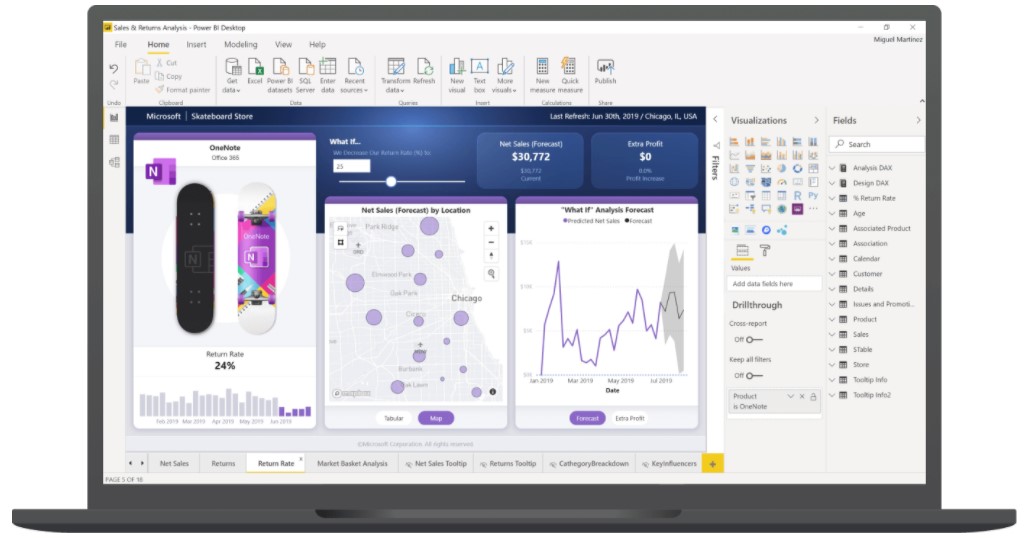
Power BI Desktop is available for free download from the Microsoft Store and you can download the application on any Windows machine. At present, Power BI is not available for any other operating systems other than Windows. There is also a mobile application for Power BI, which can be installed on Android and iOS devices. This mobile app is used to visualize reports in a native mobile format rather than the specified desktop view.
Power BI enables the user to connect to several heterogeneous data sources and fetch the relevant data into the Power BI data model. Once the data is within Power BI, the users can modify, shape and transform this data according to the reporting needs. This transformed data can be then visualized in the form of graphs and charts to get insights upon. These visualizations can be used to support various scenarios like storytelling, what-if analyses, forecasts, and other predictions, etc.
Power BI also has many REST APIs available using which, the developers can automate few administrative tasks, such as refreshing a dataset or adding a new user to a report, etc. This takes the Power BI service to another level which also supports embedding the Power BI Dashboards within another web application. This web application will behave like that of the Power BI service, except the fact that it can now have the user control and other features native to the web application.
4. Power Virtual Agents
This is a new addition to the Microsoft Power Platform. Virtual Agents are the bot building services provided by Microsoft for business users. Using this, the users can build a virtual chat agent from scratch without having to write a single line of code. All the integration and logics can be implemented in the graphical user interface of the Power Virtual Agents portal.
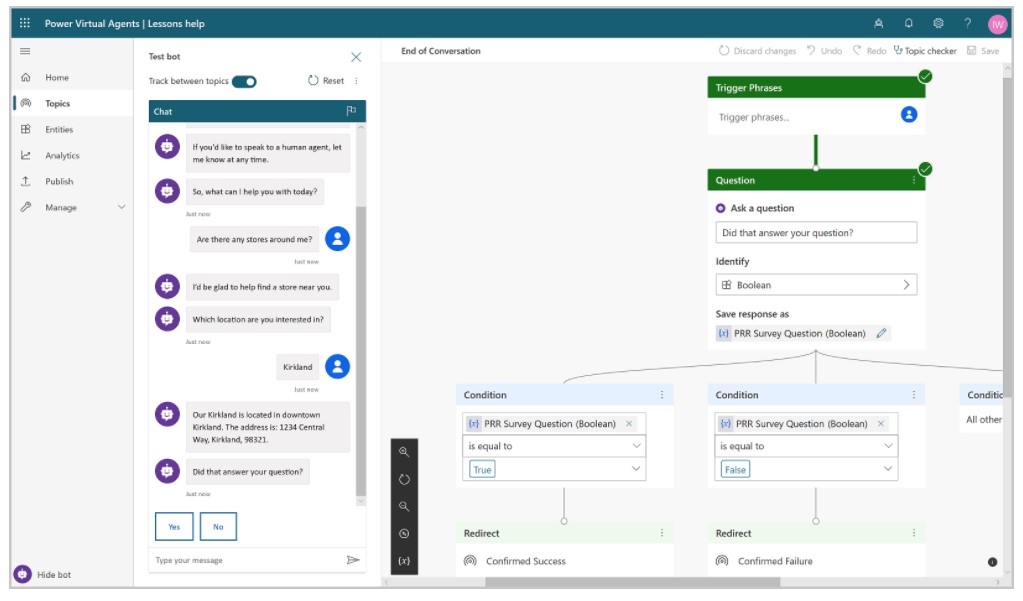
Power Virtual Agents can handle the entire chatbot development life cycle, starting from the dialog creation to the deployment of the virtual agent to a channel like Slack, Skype, Teams, etc. This service is also integrated with the other tools within the Microsoft Power Platform such as Power Automate. Based on the user’s replies, the virtual agents are capable to trigger any workflow from the Power Automate and get the job done as intended.
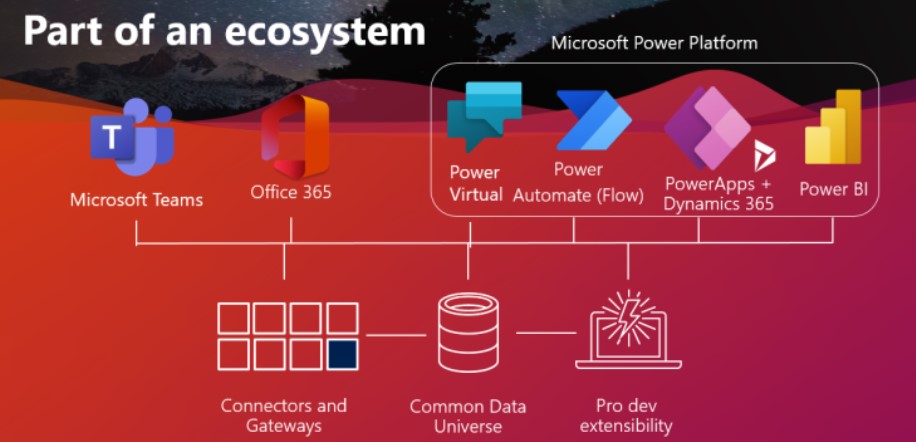
Among the programs listed above, there are cross cutting features which enable the Power Platform to be leveraged to its full potential.
Some of these are:
AI Builder lets users and developers add AI capabilities to the workflows and Power Apps they create and use. AI Builder is a turnkey solution that allows you to easily add intelligence to your workflows and apps and predict outcomes to help improve business performance without writing code.
Microsoft Dataverse is a scalable data service and app platform which lets users securely store and manage data from multiple sources and integrate that data in business applications using a common data model to ensure ease and consistency to users. Microsoft Dataverse is the common currency that enables the components of Power Platform to work together. It’s the foundation that enables the consolidation, display, and manipulation of data.
Connectors enable you to connect apps, data, and devices in the cloud. Consider connectors the bridge across which information and commands travel. There are more than 275 connectors for the Power Platform, enabling all of your data and actions to connect cohesively. Examples of popular connectors include Salesforce, Office 365, Twitter, Dropbox, Google services, and more.
The Benefits of Microsoft Power Platform
- No specialized IT knowledge required
Trusted, intuitive technology
All data together in one database, thanks to the underlying Common Data Service, (CDS)
How Microsoft Power Platform can help?
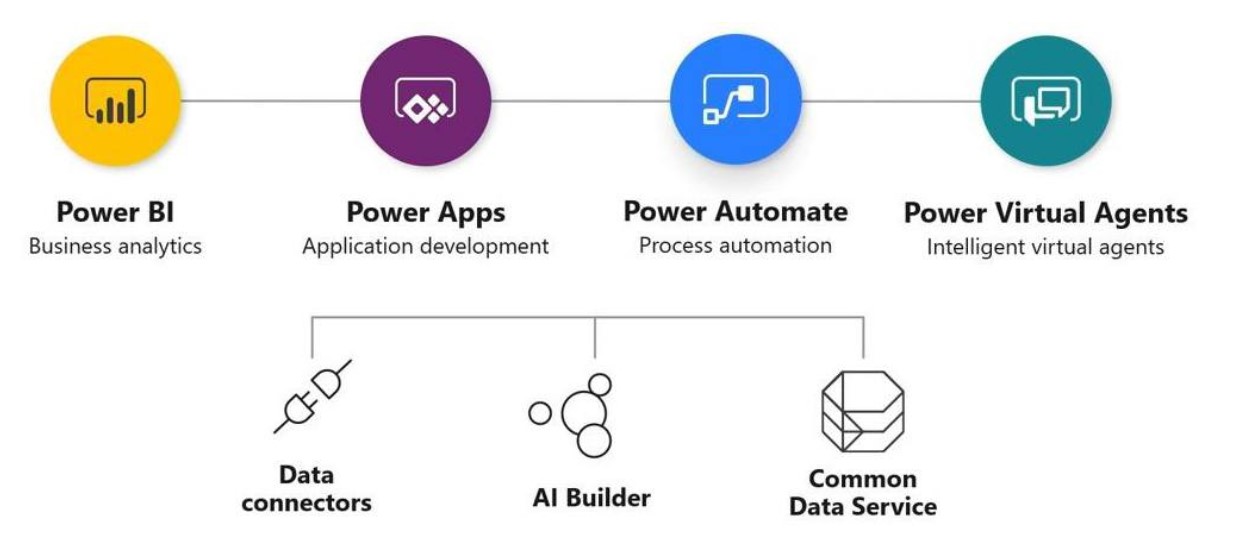
One source of truth is the goal of every business, and the Microsoft Power Platform is making this all possible by putting power in the hands of everyday users.
For Citizen Developers
- Prep data with ease and the familiarity of Excel.
- Connect to hundreds of sources: Dynamics 365, Azure SQL DB, Excel, SharePoint, LinkedIn, and more.
- Empower users to perform tasks with minimal clicks and swipes.
For Developers
- Give your stakeholders a single view across their ecosystem.
- Make decisions in your workflow, e.g., run an action only when certain conditions are met.
- Embed PowerApps into your organization’s website and other solutions that are used.

For Business Users
- Always be in the know with real time data.
- Automate various manual and mundane tasks – leaving time for the important things.
- Optimize user adoption with an app that’s available on iOS, Android, Windows 10 devices, and the web.
For IT
- Secure Business Intelligence for your organization.
- Securely connect to on premises data and cloud based services to make the most of the data you already have.
- Manage licensing for PowerApps through the Office 365 Admin Portal.
Are you ready to explore Microsoft Power Platform?

The Microsoft Power Platform fills the gap we often see between standard applications, expensive and time-consuming customizations that were developed in the past. Using the Power Platform, users with relatively little technical knowledge, can build apps, analyze data and easily automate processes themselves.
The Microsoft Power Platform is suitable for digitizing paper processes, and also for replacing error-prone and disparate Excel spreadsheets that circulate around many organizations. All data comes together in one database, so that everyone has access to the same information at all times. The Power Platform is based upon Data Connectors, AI Builder and Common Data Service.
Together, these tools empower you to innovate with one connected platform.
Interested in learning more about the Microsoft Power Platform, and how it can assist your business? Get in touch with us for your complimentary consultation today.
Author



